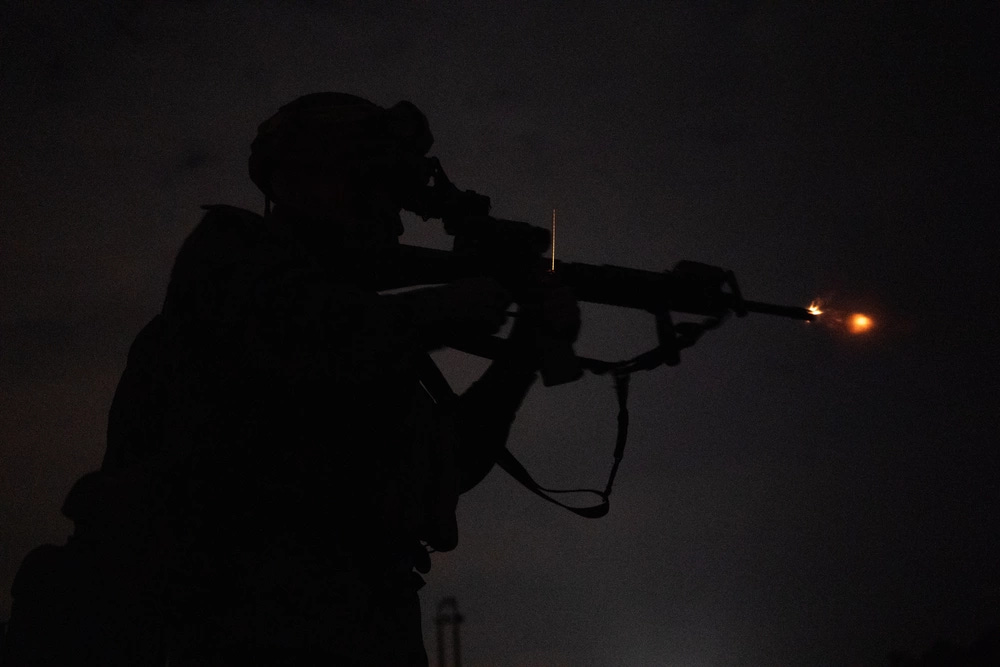Some may argue the points below as moot since we are in the process of fielding the AN/PVS-31 with ECOTI but since that fielding is to infantry battalions only and will not be complete until sometime in FY25 I submit the following article to be relevant.
I’ve seen many a platoon night attack aboard MCAGCC and a few less prominent bases, some of them good but most of them just a string of stumbling tactical events. With so many competing events in a commander's training calendar, this isn’t really a surprise so I offer the following insights in order to close the loop on night attacks. I’ll share with you my experience on what works when and how so that your night attack isn’t riddled with ‘discovery learning’ that detracts from your objective.
Much of how we operate at night has come from dated training publications and very little is written on the best practices for the gear that is in the hands of our Marines today. A good place to start preparing for night attacks or night operations in general is your local MAG Nite Lab. The pilots have been doing this since the late 80’s and they have standards associated with night vision device training and the use of night vision devices. A pilot will not fly at night with less than 20/30 vision under NVD’s. The class taught by the Nite Lab physiologist will be insightful for anyone who takes it and is centered on the proper fit and function of the NVD. Tying your NVD use to a vision standard such as no less than 20/40 will ensure that your Marines can actually achieve the tactical results you are asking of them.
Knowing the moon phase on the day of your planned attack is a must. Not just how much illumination the moon will provide but when it will rise, when it will set, and where in the sky it will be during your attack. You must take this information and apply to the location, time and terrain of your attack. For instance: if the moon rises at 1930 and will provide 85% illumination tonight on MCAGCC that means that you won’t have any illumination of the enemy objective on range 410A until 2030. Not only that but your machine gunners on machinegun hill won’t be able to ID maneuver in the wash until 2130, once the moon has risen high enough to not be in their field of view while looking east.
A non-illuminated attack is a misnomer. We need some illumination in order to see; whether that comes from the stars, the moon, our rifle PEQ16’s, arty/mortar illumination or a white star parachute. We need at least 15% illumination in order to see adequately with the current PVS-14. Without that 15% we need to illuminate the objective with artificial means. This doesn’t mean that we need 30 minutes of continuous illumination in order to conduct an attack, it simply means that you need to utilize artificial illumination at critical points within your attack to ensure (1) that your forces are where they are supposed to be, (2) that your forces are oriented appropriately and (3) if they are not where they need to be or oriented appropriately they can now make the necessary corrections.
The placement of illumination in support of an attack is very important. Gone are the days of placing the illumination behind the enemy position in order to silhouette him. That tactic will wash out your NVG picture and force your Marines to rely on their unaided eye and to transition in between the two. Illumination needs to be placed offset to the objective far enough that it is not within the objective lens of the Marines NVGs so that it does not wash out their picture. When placed like this the marine can continue to use the NVG while illumination is present, providing him with a better picture and removing the need to transition to the unaided eye. Even better is the ‘both eyes open’ concept we employ during marksmanship. With both eyes open your brain will merge the two pictures, the NVG and unaided eye, into one and will have more clarity but it must be trained to.
PVS-31’s are great but fielding won’t be complete until FY25. Even then, many of the points made above will still be valid. The PVS-31’s still need ambient light in order to provide you with a picture. A totally dark night or room will still be void of the details you need to operate. Bright objects in your view like the moon will still wash out your picture to some degree. Artificial illumination offset to the target will still provide a better picture on those nights with 0% illum while not washing out the picture. The clip on thermal imager that comes with the PVS-31’s will provide a dimension that I am not prepared to address just yet, so stay tuned.
Editors Note: For more Night Combat TTPs, look for an updated version of Brendan McBreen's Night Warrior Handbook coming soon to 2ndBn5thMar.com.
Gunner Curtis is the 7th Marine Regiment Gunner. He can be reached at james.e.curtis@usmc.mil




